EN-Engineering-Product-Hot-Rolled-Valast abrasion resistant TSN
Valast®
Efficient and reliable abrasion resistant steel sheet withstands harsh wear and tear whilst maintaining lasting quality – even in the most demandin
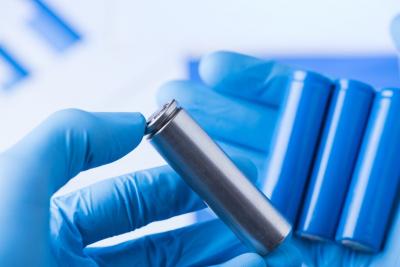
<a href=/en/brands/automotive/hilumin>HILUMIN®for cylindrical battery cell casings in electric vehicles.</a>

<a href=/en/brands/automotive/hi-lite>Hi-Lite:a thin non-oriented electrical steel for efficient and high-performance electric motors.</a>
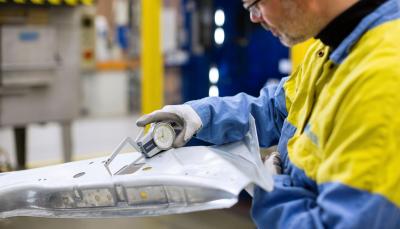
<a href=/en/brands/automotive/hyperform>Hyperform®: extra formability for lightweight AHSS design.Tackling weight, costs and performance si</a>

<a href=/en/brands/automotive/magizinc-auto>MagiZinc®Auto: advanced hot-dip galvanisedcoating for inner parts and outer panels.</a>

<a href=/en/brands/automotive/plt>Prime Lubrication Treatment:advanced surface treatment for smooth processing of automotive panels.</a>

<a href=/en/brands/automotive/serica-flo>SericaFLO®:a premium surface finish for a market-leading paint appearance.</a>

<a href=/en/brands/automotive/xpf>XPF® for easy lightweighting and improved energy absorption in complex structural vehicle parts.</a>

<a href=/en/brands/automotive>Brands in the Automotive product portfolio</a>

<a href=/en/brands/engineering/magizinc>MagiZinc®is an innovative replacement for conventional galvanised steels. It provides superior corr...</a>

<a href=/en/brands/engineering/valast>Valast®is an efficient, reliable, wear-resistant steel plate that tackles heavy wear and tear while...</a>

<a href=/en/product-ranges/engineering/direct-rolled/high-strength-steel>Ymagine® direct-rolled steel comes in five high-strength, low-alloy (HSLA) grades offering either w...</a>

<a href=/en/brands/engineering/ympress>Ympress®is a hot-rolled, high-strength, low-alloy steel with outstanding formability and consistent...</a>

<a href=/en/brands/engineering/ympress-laser>Tailor-made for efficient, high-speed laser cutting, this homogeneous, hot-rolled steel combines exc...</a>

<a href=/en/brands/engineering/ymvit>Tata Steel’s Ymvit® cold-rolled steel for enamelling delivers end product and process benefits in...</a>

<a href=/en/brands/engineering>Discover our engineering brands for various applications in the heavy vehicles sector, solar constru...</a>

<a href=/en/brands/green-steel-solutions>Together towards a zero-carbon emissions, circular world.</a>

<a href=/en/brands/packaging/protact>Protactlaminated steel is food-safe and optimised for efficient, sustainable canmaking with opportun...</a>

<a href=/en/brands/packaging/tcct>Asustainable, reliable replacement for conventional tin-free packaging steel (ECCS) developed by Tat...</a>

<a href=/en/brands/packaging>We make steel for packaging. Our specialist steels are designed for food and drinks cans, aerosols, ...</a>

<a href=/en/product-ranges/automotive/cold-rolled>Tata Steel offers a comprehensive range of cold-rolled batch-annealed products. This means we can ta...</a>

<a href=/en/product-ranges/automotive/hot-rolled>Hot-rolled steel offers performance, versatility and value. Our hot-rolled strip steel range include...</a>

<a href=/en/product-ranges/automotive/metallic-coated>Tata Steel offers a wide choice of metallic coated steel for inner and outer panels. Our product ran...</a>

<a href=/en/product-ranges/automotive/electro-plated-steel>Tata Steel is a committed partner within the automotive industry. Combining ourmaterials, design eng...</a>

<a href=/en/product-ranges/automotive>Explore our extensive range of automotive steel products designed to reduce your total cost of owner...</a>

<a href=/en/product-ranges/construction>Used globally, supplied locally, our innovative construction products have inspired pioneering susta...</a>

<a href=/en/product-ranges/engineering/hot-rolled>Hot-rolled steel offers performance, versatility and value.</a>

<a href=/en/product-ranges/engineering/direct-rolled>Tata Steel's Ymagine®direct-rolled steel: a viable alternative to cold-rolled and hot-rolled steel....</a>

<a href=/en/product-ranges/engineering/cold-rolled>Tata Steel offers a comprehensive range of cold-rolled steel comprising batch annealed products. Thi...</a>

<a href=/en/product-ranges/engineering/metallic-coated>Tata Steel offers a wide choice of metallic coated steel.</a>

<a href=/en/product-ranges/engineering>Working together with the world’s leading equipment makers, steel processors and domestic applianc...</a>

<a href=/en/product-ranges/packaging>As one of Europe’s leading suppliers of high quality packaging steels, we work closely with our bu...</a>

<a href=/en/product-ranges/plating/electro-plated>At Tata Steel Plating we work closely with our customers to find cost-effective solutions to technic</a>

<a href=/en/product-ranges/tubes/structural-tubes>Cold formed welded steel structural hollow sections supplied to EN10219.Produced with precision and ...</a>

<a href=/en/coil-data-on-demand>Make better decisions and reduce lead times with direct access to coil data. You can now empower you...</a>

<a href=/en/automotive/aurora-online>High quality data and expert advice to make your simulations easier to set up and more accurate.
</a>

<a href=/en/our-businesses/plating>Tata Steel's integrated business Plating is the world's leading expert in electroplating for technic...</a>

<a href=/en/our-businesses/steel-service-centre-feijen>Our service centre in Maastricht (Feijen) is part of our highly specialised distribution service for...</a>
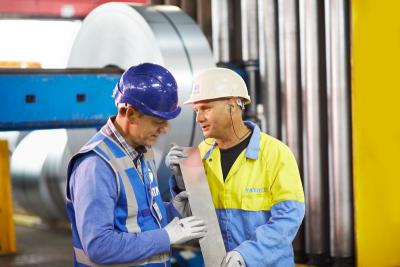
<a href=/en/our-businesses/steel-service-centre-multisteel>MultiSteel offers one of the broadest multi-metal ranges in Europe, including HRP, CRC, HDG, DSP and...</a>
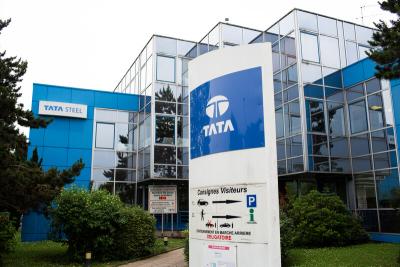
<a href=/en/our-businesses/steel-service-centre-unitol>Our Unitol steel service centre in Corbeil-Essonnes, France, offers one of the broadest ranges of st...</a>

<a href=/en/our-businesses/steel-service-centre-gelsenkirchen>Our Gelsenkirchen plant, producing slit coils and cut-to-size sheets, include slitters and blanking ...</a>

<a href=/en/our-businesses/steel-service-centre-layde>Layde steel slu is located in the north of Spain, the Basque Country.For the transformation of coils...</a>
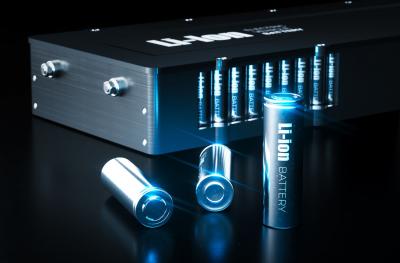
<a href=/en/expertise/automotive/applications/energy-storage>Enabling the transition to electrified vehicles by providing solutions for cylindrical battery casin</a>
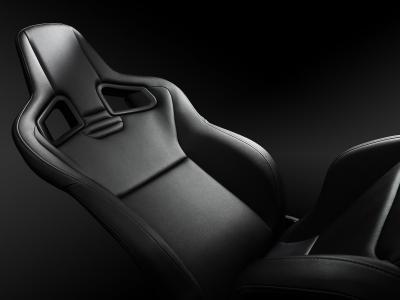
<a href=/en/expertise/automotive/applications/seating>Steel design for automotive seats</a>

<a href=/en/expertise/automotive/applications/body-in-white>Supporting you from concept to series production. Increased energy absorption in BIW parts, reducing...</a>

<a href=/en/expertise/automotive/applications/chassis-and-suspension>Helping you strike the balance in chassis design.</a>

<a href=/en/expertise/automotive/applications/outer-panels>SericaFLO for excellent paint appearance on outer panels with appealing designs that are enabled by ...</a>
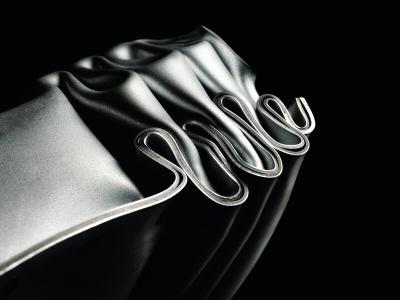
<a href=/en/expertise/automotive/applications>Tata Steel offers a wide, multi-product portfolio of strip, tubes and forging steels, including a sm...</a>

<a href=/en/expertise/automotive>Working with you on sustainable vehicles and value chains</a>

<a href=/en/expertise/engineering/applications/transportation>Our steels are used in trucks, trailers, trains and ships. Our expertise is in finding the right sol</a>
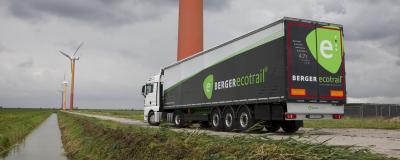
<a href=/en/expertise/engineering/case-studies/bergerecotrail>Using Ympress® S700MC to manufacture BERGERecotrail® semi-trailer bodies and welded-frames for the...</a>

<a href=/en/expertise/engineering/case-studies/frank-original-boron-manganese>Expansion of boron manganese steel offering for agricultural machinery in partnership with Frank Wal...</a>

<a href=/en/expertise/engineering/case-studies/hyster-yale>Opportunities for Hyster Yale to deliver lower total cost of ownership to its customers.</a>

<a href=/en/expertise/engineering/case-studies/jcb-landpower>EnablingJCB to develop an optimally-designed next-generation tractor.</a>

<a href=/en/expertise/engineering/case-studies/kuhn-gyrotedders>KUHN co-developed a newhollow section specification:Hybox TT.</a>

<a href=/en/expertise/engineering/case-studies/linssen-yachts>S235 steel products create ultra-smooth hulls for Linssen Yachts.</a>

<a href=/en/expertise/engineering/case-studies/palfinger>Crane maker Palfinger benefits from a unique partnership.</a>

<a href=/en/expertise/engineering/case-studies>We can make a real difference to your performance by understanding your business and delivering stee...</a>

<a href=/en/expertise/engineering/applications>Construction equipment applications, consumer products and more.</a>

<a href=/en/expertise/engineering/applications>Construction equipment applications, consumer products and more.</a>
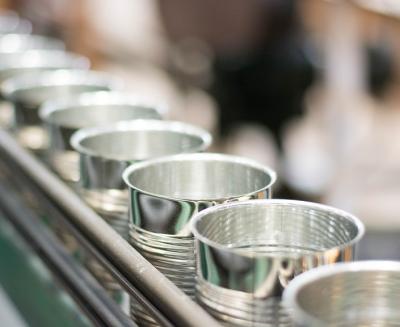
<a href=/en/expertise/engineering/applications>Construction equipment applications, consumer products and more.</a>

<a href=/en/expertise/engineering/applications>Construction equipment applications, consumer products and more.</a>

<a href=/en/expertise/engineering/applications>Construction equipment applications, consumer products and more.</a>

<a href=/en/expertise/engineering/applications>Construction equipment applications, consumer products and more.</a>

<a href=/en/expertise/packaging/applications>Our packaging steel products are designedfor a diverse range ofapplications from aerosols to food ca...</a>

<a href=/en/expertise/packaging/case-studies/bonduelle>Two thirds of Dutch consumers didn'tknow that a can is endlessly recyclable according to consumer re...</a>

<a href=/en/expertise/packaging/case-studies/snert>Joris Bijdendijk is a renowned Dutch chef at the Michelin-starred RIJKS restaurant, located next to ...</a>

<a href=/en/expertise/packaging/case-studies/calvo-vuelca-facil>Consumers, from older users to children can sometimes find traditional tuna cans difficult to use du...</a>
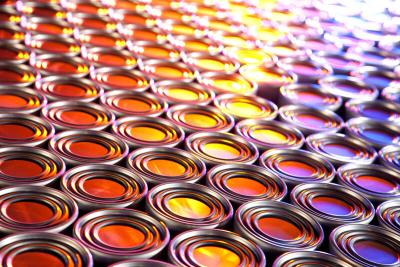
<a href=/en/expertise/packaging/case-studies>We can make a real difference to your performance by understanding your business and delivering stee...</a>
But how did we get from creating a chemical formulation in a laboratory, to fully commercially producing 300 tonne casts of Valast 450 material at our plant in IJmuiden, The Netherlands? Well, the truth is that it was a process totalling two and a half years, the details of which we’ll go over in this and the next blog post in this series.
The first thing to note is that Bin’s team created 10 different chemistries to assess which one gave optimal results in the real world. It would be incredibly costly and time-consuming if we had created a full cast of every chemistry in IJmuiden.
That’s where lab trials allow engineers to put chemistries through a scaled-down production process and evaluate which end product yields the best results.
For the development of Valast, Bin’s team created several 25kg ingots – using the 10 chemistries they chose to evaluate further. Each of these ingots was then rolled to a 6mm or 15mm strip using the laboratory-scale hot rolling process. Rolling to these two very different thicknesses allowed the engineers to calculate the optimum thickness window for each chemistry.
The development team already knew that the cooling rate on the run out table would be crucially important to achieve the required hardness. To simulate this in the lab trials, they placed thermocouples on the surface of the rolled steel strip at two different gauges. We heated the strips in the furnace up to 930ºC, they were then moved quickly to the run out table to simulate plant trial cooling. The cooling rates were measured and this data was then reviewed by IJmuiden’s production engineers to evaluate which of these cooling rates was practical.
Our research and development engineers then evaluated each of the samples produced to understand which one delivered the qualities that we required for our abrasion resistant steel. This chemistry became Valast, but the development journey wasn’t over yet. Next came production trials in IJmuiden….
Take a look at our article on Valast 450's Chemistry to find out what chemistry we are using and how this is beneficial for the customer.
Efficient and reliable abrasion resistant steel sheet withstands harsh wear and tear whilst maintaining lasting quality – even in the most demandin